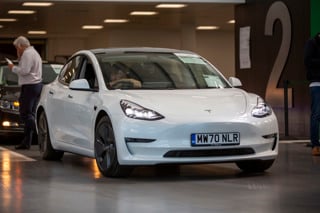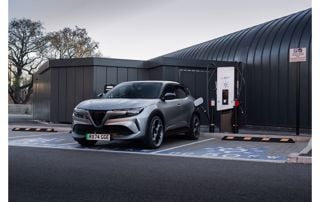Indicata’s own analysis estimates that the Electric Car Grant will support between 5.8% and 14.1% of annual electric vehicle (EV) sales, so will only have a “modest impact” on the market.
The company said that while the £650 million in funding for the new EV market does provide “meaningful individual support, its overall market transformation potential is severely constrained by budget limitations”.
A new white paper, titled "UK Electric Car Grant Program: New Car Market Impact and BEV Residual Value Analysis," examines the program's structure and projects its impact on battery electric vehicle (BEV) sales and residual values through 2029.
With the ZEV mandate requiring 33% of the 2 million vehicle market to be BEVs (approximately 660,000 electric vehicles annually), Indicata said the grant program's reach appears modest against the scale of market transformation required.
 Andy Shields, Indicata’s global business unit director, said: “The reality is that this program, while well-intentioned, will function more as targeted support for specific market segments rather than a broad market transformation tool that many were expecting.
Andy Shields, Indicata’s global business unit director, said: “The reality is that this program, while well-intentioned, will function more as targeted support for specific market segments rather than a broad market transformation tool that many were expecting.
"When we look at the Italian precedent, where similar support levels failed to materially impact BEV registration rates, we have to question whether this £650m investment will deliver the market change the Government is seeking."
The Italian Government supported BEVs in Italy with an annual budget of €240m (£208m) with support up to €5,000 per unit (£4,350). This is an equivalent level of support, yet Italian BEV registrations remained at circa 4.2%.
Impact of the ECG on residual values
The analysis identifies significant differences in how the grant program will affect vehicle RVs based on age segments.
Indicata said it expects young vehicles under 12 months to experience “notable downward pressure on RVs, with approximately 90% of new vehicle price changes flowing through to the used market.
Conversely, vehicles aged three years or more will see minimal impact due to the weaker correlation between new and used vehicle pricing.
Shields explained: "The rental industry and short-cycle fleet operators face particular exposure to these dynamics.
"Those purchasing non-subsidised vehicles risk significant losses if those models subsequently gain subsidy eligibility, as the market will adjust residual values downward to reflect the reduced new vehicle transaction prices."
The ECG program's tiered structure offers £3,750 for vehicles demonstrating the lowest carbon emission scores from manufacturing processes, while providing £1,500 for vehicles meeting basic environmental criteria.
This approach requires manufacturers to hold verified Science Based Targets and undergo complex dual assessment processes.
"The program will essentially brand BEV cars as 'Environmental' versus 'Non-environmental' despite all being zero emissions," noted Shields.
"Consumer behaviour will likely shift toward subsidised models, creating competitive dynamics that may reshape market positioning regardless of the limited financial scale."
Indicata’s analysis warns that while long-cycle fleets face minimal downside and may benefit from reduced transaction prices, short-cycle operators must carefully navigate timing risks.
The report recommends that fleet operators in particular prioritise subsidised vehicle purchases while avoiding non-subsidised vehicles with potential future subsidy eligibility.
For manufacturers, the environmental requirements create strategic imperatives extending beyond traditional vehicle development, with assembly and battery production locations directly affecting subsidy eligibility through carbon intensity ratings.
Drawing parallels with the Tesla price reduction program of Q1 2023, the analysis suggests that significant pricing interventions by major market players create market-wide effects rather than model-specific impacts, potentially extending the grant program's influence beyond directly subsidised vehicles.
Government optics vs material effect
Shields said: "This is more about Government optics than material market effect.
“The ZEV Mandate, with all its negative side effects for the industry, will continue to be the driving force in the market.
“For OEMs, dealers and fleets, there's still no light at the end of the tunnel – just a politician with a dim candle trying to shine a light on their environmental credibility,” observed Shields.
The white paper concludes that while the program provides a template for policy intervention, its limited scale relative to the total BEV market constrains its potential for broad market transformation.
The analysis suggests the program's most significant long-term impact may be accelerating manufacturer commitment to sustainable practices rather than driving volume growth.
"As the UK moves toward its net-zero commitments, this ECG program provides a framework for future policy intervention.
“However, the ZEV Mandate targets, despite recent adjustments, combined with this new grant, are likely to become even more unsustainable for the UK automotive industry. The government will have to respond again," Shields concluded.
The full white paper "UK Electric Car Grant Program: New Car Market Impact and BEV Residual Value Analysis" is available to download here: UK Electric Car Grant Program White Paper.





















Login to comment
Comments
No comments have been made yet.